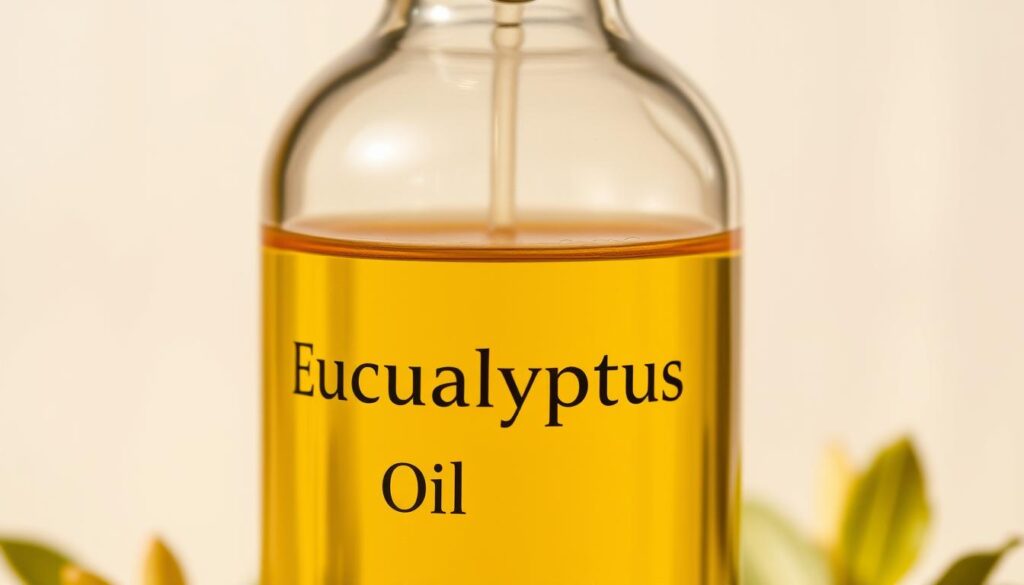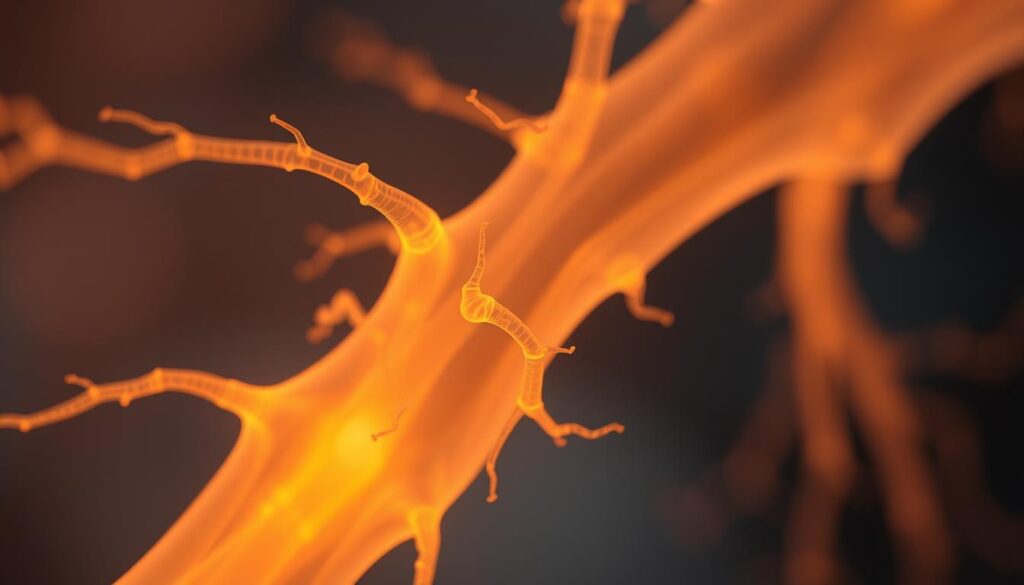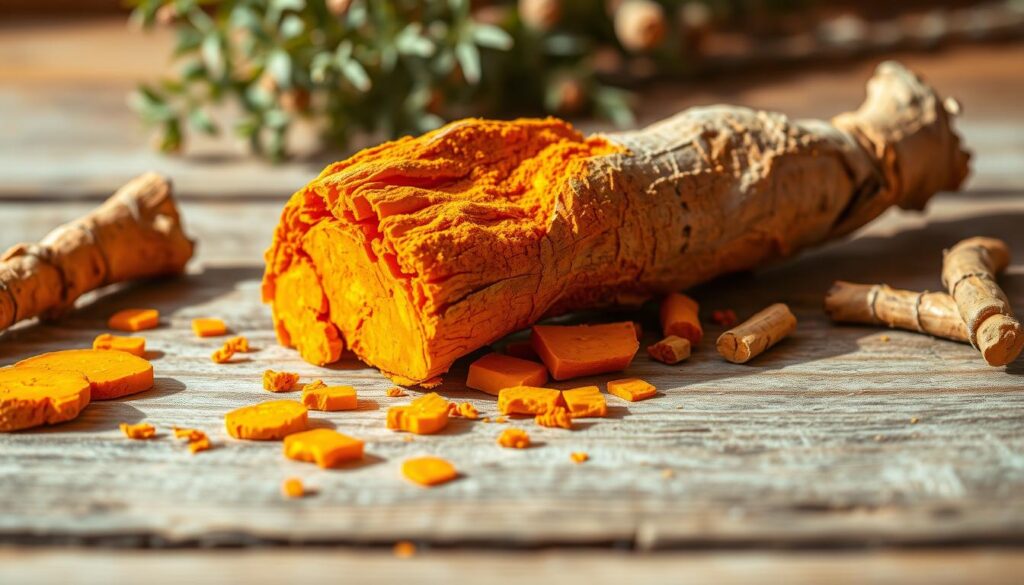Could a mix of oils herbs and movement ease your discomfort without heavy medications?
This article is a concise, research informed guide to nine accessible options many people use for natural pain relief. We focus on practical science aligned remedies: essential oil applications, herbal and spice extracts, and complementary therapies backed by studies.
Expect clear steps for safe use typical timelines for benefits, and notes on where each option tends to help headaches muscle soreness, nerve discomfort, or inflammation related pain. The review highlights safety points such as diluting oil, patch testing, and when to seek clinical care.
This piece draws on peer-reviewed research and trusted health summaries to give a balanced way to try approaches that may also improve sleep and stress coping, which can support overall pain control.
Key Takeaways
- Evidence supports several nonpharmacologic options across oils, herbs, and therapies.
- Safety matters: dilute topical oil avoid ingestion, and patch test before use.
- Responses vary track results and timelines for each remedy you try.
- Some remedies can complement care, but seek medical review for severe or new pain.
- This article gives stepwise guidance to choose options for specific types of pain.
Why People Seek Natural Pain Relief Today
More people are turning to complementary strategies to manage everyday discomfort and long term aches.
Many people choose nondrug options to avoid medication side effects and to support long term pain management. They want adjunctive approaches that may also improve sleep mood, and daily function. For some, these choices fit a holistic lifestyle and reduce reliance on regular prescription tablets.
Clinical research guides which remedies are worth trying now. Reviews from sources like Medical News Today and NCCIH show acupuncture can help chronic pain headaches, and osteoarthritis. Yoga often reduces lower back pain, and mindfulness improves pain symptoms and quality of life.
Evidence varies from small trials to meta-analyses so results differ by person. Certain essential oils and herbs show short term benefits for procedural or tension pain while acupuncture and movement therapies have stronger aggregate data.
Practical takeaways:
- Use remedies as part of a broader pain management plan.
- Test responses follow safe dosing or dilution, and screen for interactions.
- Discuss options with a clinician before combining with prescription care.
Complementary strategies can reduce symptoms and improve function but they do not replace urgent medical care.
Lavender Essential Oil for Headaches and Relaxation
Many people reach for lavender oil to soothe a throbbing head and settle an anxious mind.
What studies suggest about pain inflammation, and antioxidant effects
A 2023 study found inhaling or applying lavender topically reduced pain during arterial cannulation. Animal research also shows pain relieving, anti-inflammatory, and antioxidant effects. These findings support using lavender to help relieve pain from tension type headaches and to promote relaxation.
How to use: inhalation and diluted topical application
Inhale: run a diffuser or add a few drops to a tissue for short sessions 5–15 minutes at headache onset or before sleep.
Topical: dilute 3–5 drops of lavender per ounce of carrier oil and apply to temples or the neck. Limit application to intact
and avoid eyes.
Safety notes: dilution, toxicity if ingested, and skin testing
Never ingest essential oils. Patch test on the inner forearm before wider use. Stop and seek medical advice if headaches worsen, new neurological signs occur, or a rash appears.
Start with brief inhalation to gauge tolerance and use quality, reputable oils stored away from light.

| Use | Typical method | Timing |
|---|---|---|
| Headache relief | Inhale via diffuser or tissue | 5–15 minutes at onset |
| Topical calming | Dilute 3–5 drops/oz carrier apply to temples/neck | Apply as needed avoid eyes |
| Sleep aid | Diffuse before bedtime | 10–15 minutes as part of routine |
Peppermint Oil for Tension Headaches and Muscle Discomfort
A cooling, topical option may ease tight temples and sore neck muscles within minutes.
Active compounds and how they work: Peppermint oil contains menthol, carvacrol, and limonene. Menthol produces a cooling analgesic effect that can alter pain perception and soothe tight muscles. These compounds also show mild anti-inflammatory and analgesic properties.
Topical techniques for temples, forehead, and muscles
For tension headaches, dilute several drops of peppermint in a carrier oil and massage gently into the temples and forehead. Use slow, circular motions to spread the blend and encourage relaxation.
To treat neck and shoulder muscle pain extend the dilution and rub over sore muscles. A roll-on format offers controlled portable application at work or while commuting.
Who should avoid it and potential side effects
Do a spot test on the inner forearm before wider use. Avoid applying to broken or irritated skin and do not use on young children. Stop if stinging, redness, or worsening headaches occur.
- Start small and reapply after 15–20 minutes if needed to evaluate your response.
- Pair application with hydration, brief screen breaks, and simple breathing exercises to further relieve pain.
- People who are pregnant nursing, or have medical concerns should consult a clinician before use.
Begin with a low dilution and monitor the area for several minutes to ensure tolerance.
| Use | Method | Notes |
|---|---|---|
| Tension headaches | Diluted topical massage to temples/forehead | Gentle circular strokes avoid eyes |
| Muscle soreness | Dilute and rub on neck/shoulders | Use carrier oil to reduce irritation combine with rest |
| Portable relief | Roll-on application | Controlled dose convenient for work or travel |
Eucalyptus Oil for Pain Swelling and Inflammation
Eucalyptus has gained attention as a short-term aid for symptoms tied to inflammatory joint conditions.
What the evidence shows: One study in people with rheumatoid arthritis reported that inhaling eucalyptus oil for about five minutes, three times daily over one month reduced pain and improved quality of life measures. These findings suggest inhalation can help relieve discomfort during flare ups involving swelling and inflammation.

Proposed effects and simple inhalation protocol
The proposed effects include modulation of perceived pain and increased comfort that can support daily activity. Try brief inhalation sessions about 5 minutes three times a day while you monitor how you feel.
Safe topical use and precautions
For topical use, always dilute eucalyptus in a carrier oil and perform a patch test on intact skin. Avoid mucous membranes and never ingest the oil it can be toxic if swallowed and may depress the respiratory system.
- Do not use near children or pets eucalyptus can affect breathing.
- People with asthma or respiratory sensitivity should consult a clinician before inhaling.
- Pair inhalation with gentle range of motion activity to ease stiffness in the body.
- Track symptom changes over weeks to judge if this treatment helps your goals.
Choose verified pure essential oils and store them safely.
Clove Oil for Dental and Localized Pain Relief
Clove oil has a long folk history for easing toothaches and nearby oral aches.
What research shows about analgesic effects
A 2021 randomized study found clove oil matched ice and beat lignocaine gel in lowering pain perception during intraoral injections in children. Laboratory work also supports anti-inflammatory and antioxidant effects tied to eugenol.
Proper dilution and topical use around the mouth
Use as a short-term, localized remedy. Dilute the essential oil in a carrier oil and apply very sparingly to the outer cheek or gum near the sore spot with a cotton swab.
- Do a patch test on the forearm before facial use to check for irritation.
- Avoid swallowing and never put undiluted oil inside the mouth.
- Stop if burning, redness, or worsening occurs clove oil can feel warming.
- Seek dental evaluation for persistent tooth pain to rule out infection.
Tip: Keep all oils out of reach of children and note your response over several days to judge benefit.
Capsaicin from Chili Peppers for Nerve and Chronic Pain
Capsaicin the active compound in chili peppers, offers a targeted option for people who have nerve related chronic pain.
How it works: Capsaicin desensitizes local nociceptors and lowers release of pain mediating chemicals from nerve endings. This reduces ongoing signals sent to the brain and can change pain perception in the affected body area.

When creams or patches may help
Topical capsaicin shows clear benefit for neuropathic pain in multiple clinical reports and cohort studies. Higher strength prescription 8% patches Qutenza are applied in clinic for focal areas. Over the-counter creams deliver lower levels and suit routine at-home symptom management.
Expected sensations and application cautions
Expect an initial burning or tingling sensation and a feeling of heat at the site. This usually lessens with repeated use as nerves adapt.
- Use gloves when applying and avoid eyes or mucous membranes.
- Apply only to intact skin on the body and wash hands well after use.
- Start on a small area to assess tolerance, then expand coverage if well tolerated.
- Schedule applications when temporary burning will not interfere with activities or sleep.
Clinical note: Capsaicin can improve sleep fatigue, and quality of life measures in chronic pain cohorts but seek medical guidance for severe neuropathic pain or persistent skin reactions.
Practical tip: Treat capsaicin as a targeted remedy within a broader multimodal treatment plan and track symptom levels and function over time to judge benefit.
Ginger for Muscle Pain Recovery and Nausea Relief
Ginger offers a food-based approach people often try to ease soreness and support recovery after hard workouts or surgery.
Findings on exercise-related muscle pain and postoperative discomfort
A 2017 clinical trial found ginger powder performed comparably to ibuprofen for postoperative pain relief in some patients.
A 2015 systematic review reported that about 2 grams per day for at least five days modestly reduced muscle pain after resistance exercise and running. These results suggest ginger may speed recovery and lower inflammation in the short term.
Ways to incorporate ginger: food, tea, and supplements
Practical options: add fresh ginger to meals blend it into smoothies, brew daily tea or use a supplement when dietary intake falls short.
- Simple ginger tea: steep 1–2 teaspoons fresh grated root in hot water for 5–10 minutes sip once or twice a day.
- Target dose seen in the study: ~2 g per day for several days to weeks for workout related benefit.
- Pair ginger with light movement, hydration, and protein to help the muscle recovery process.
Start with smaller amounts to test tolerance and track specific muscle groups and activity to judge whether it helps your body.
Safety note: discuss supplements with a clinician especially if you take anticoagulants or have gallbladder issues and stop if digestive sensitivity appears.
Turmeric and Curcumin for Pain and Inflammation
Curcumin the most active compound in turmeric, has attracted attention for its anti-inflammatory effects and potential to reduce pain in some people.
Several reviews show curcumin can reduce pain and inflammation with benefits comparable to NSAIDs in certain studies. It is best used as an adjunct a complement to not a replacement for prescribed therapy when treating chronic joint or activity related symptoms.

Meals versus supplements
Culinary turmeric contains about 2–3% curcumin and can support overall wellness when eaten regularly. For targeted effects, standardized curcumin supplements deliver higher levels and consistent dosing.
Absorption tips and timing
Combine turmeric or curcumin with black pepper piperine and a fat source to boost absorption. Typical practical guidance: 2–5 g of culinary turmeric daily may help, but noticeable changes usually take 4–8 weeks of daily intake.
Start low, pair with food, and allow several weeks to judge whether curcumin helps your pain levels.
- Use cases: joint stiffness post-activity soreness, and recovery routines where inflammation modulation fits goals.
- Choose standardized supplements from reputable brands when higher targeted curcumin dosing is needed.
- Rotate recipes curries soups, and golden lattes to keep daily intake consistent and enjoyable.
- Watch for mild GI upset take with food and start with a lower dose to improve tolerability.
- Discuss supplements with a clinician if you take blood thinners or other medications.
| Aspect | Food-level turmeric | Curcumin supplements |
|---|---|---|
| Curcumin content | Low (~2–3%) | Standardized higher levels |
| Typical benefit timeline | Weeks consistent intake | 4–8 weeks for measurable effects |
| Absorption tips | Pair with fat and pepper in cooking | Look for formulations with piperine or enhanced bioavailability |
| Best use | Daily wellness and mild support | Adjunct therapy for targeted inflammation and pain |
Acupuncture as a Non-Drug Pain Treatment
Acupuncture offers a hands-on therapy many people use to reduce persistent discomfort without added medication.
Conditions supported by current evidence
Research from sources like NCCIH and a 2018 meta-analysis shows acupuncture helps musculoskeletal pain, tension-type headaches, migraines, and osteoarthritis. It also shows benefit across several chronic pain presentations including some forms of back pain.
What to expect during therapy and how many sessions
A licensed practitioner inserts fine needles at mapped points to influence nerve and pain modulating pathways. Sessions begin with an intake and last 20–45 minutes.
Treatment courses typically include weekly visits for several weeks, then periodic reassessment to track pain and function changes.
- Common effects: relaxation, mild localized heaviness, tingling, or reduced pain after sessions.
- Safety: choose licensed providers who use single use needles and personalized treatment plans.
- Integration: combine acupuncture with exercise, sleep improvements, and nutrition for additive effects on health.
Set clear goals improved function or fewer flares and keep a pain and activity log to evaluate outcomes.
| Aspect | Typical course | Expected effects |
|---|---|---|
| Initial visit | Assessment and first treatment | Relaxation possible immediate symptom change |
| Short course | Weekly sessions for 4–8 weeks | Gradual pain reduction improved function |
| Follow-up | Periodic maintenance or reassessment | Monitor flare frequency and activity tolerance |
Yoga and Mindfulness for Back Pain and Chronic Pain
Regular guided yoga practice plus simple meditation can lower pain signals and improve function for many with persistent back complaints.

Yoga for lower back and neck: what research indicates
A 2020 meta-analysis found structured yoga programs over about 12 weeks significantly reduced lower back pain. NCCIH also reports benefit for lower back and neck pain while evidence for other conditions is limited.
How it helps: gentle mobility, core engagement, and breathwork act as therapy to ease muscle tension and improve posture that affects pain.
Mindfulness meditation’s impact on symptoms and quality of life
A 2017 review showed mindfulness improves pain symptoms mood, and quality of life. People often report better sleep and less stress after consistent practice.
- Start with beginner or therapeutic classes and move slowly if you have prior injuries.
- Use props or chair based modifications and try brief daily sessions with gradual progression.
- Consider a short heat application before stretching to reduce stiffness and protect muscles.
Tip: Monitor back pain intensity, movement comfort, and flare frequency. Coordinate with your clinician or physical therapist when pain is complex or persistent.
9 Natural Painkillers: Quick Start Usage and Safety Guide
This short guide pairs common symptoms with easy-to-follow steps for at-home relief.
Choosing the right remedy for headaches muscle pain nerve pain, or inflammation
Match by symptom: headaches lavender or peppermint oil dental or localized oral pain clove oil nerve pain capsaicin cream or prescription patch inflammation driven joint soreness turmeric/curcumin exercise related muscle soreness ginger systemic strategies for back pain acupuncture yoga mindfulness.
Essential oil basics: dilution, carrier oils, and patch testing
Simple rules: dilute 3–5 drops per ounce of carrier oil apply only to intact skin, and always patch test on the forearm before wider use.
Safety note: never ingest oils and keep eucalyptus away from children and pets due to respiratory risk.
Starter routines and therapy combinations
Try lavender inhalation at headache onset and a peppermint roll-on for temples. Use capsaicin with gloves for focal nerve pain and wash hands after application.
Ginger at about 2 g/day for several days may ease post-exercise soreness. Take curcumin daily with black pepper and a fat source and allow 4–8 weeks to judge benefit.
Combine approaches: brief mindfulness before bed gentle yoga on rest days, and scheduled acupuncture sessions can boost overall results.
“Track what relieves pain, timing, and any reactions each week to refine your choices.”
| Symptom | Suggested remedy | Quick routine |
|---|---|---|
| Headache | Lavender or peppermint oil | Diffuse or roll-on at onset 5–15 min inhalation |
| Muscle soreness | Ginger or heat + movement | Ginger ~2 g/day gentle stretching and heat |
| Nerve pain | Capsaicin cream/8% patch | Use gloves expect initial burning clinic patch for high strength |
| Inflammatory joint pain | Turmeric/curcumin | Daily supplement with piperine assess after 4–8 weeks |
When to consult a clinician: get urgent care for sudden severe pain new neurological signs pain after trauma, or before mixing remedies with prescription medications.
Practical safety: avoid capsaicin near eyes stop any product causing persistent irritation choose high-quality brands, and discuss supplements and interactions with your healthcare provider.
Conclusion
Conclusion
Focus on safe repeatable steps dilute oils, start low on supplements, and add gentle activity to track what helps your body.
Combine evidence-backed remedies and therapies for lasting pain relief while prioritizing safety. Essential oils like lavender peppermint oil eucalyptus, and clove can give targeted effects when diluted and used properly.
Herbs and spices such as turmeric and ginger support inflammation modulation and recovery when taken consistently with food or as supplements. Pair these options with heat better sleep, posture work, and gentle movement to enhance results.
Practical next steps: pick one or two remedies, apply them consistently for the suggested timeframe, track changes, and consult a clinician for chronic pain or complex interactions. Revisit this article as a quick reference for safe application and expected effects.





